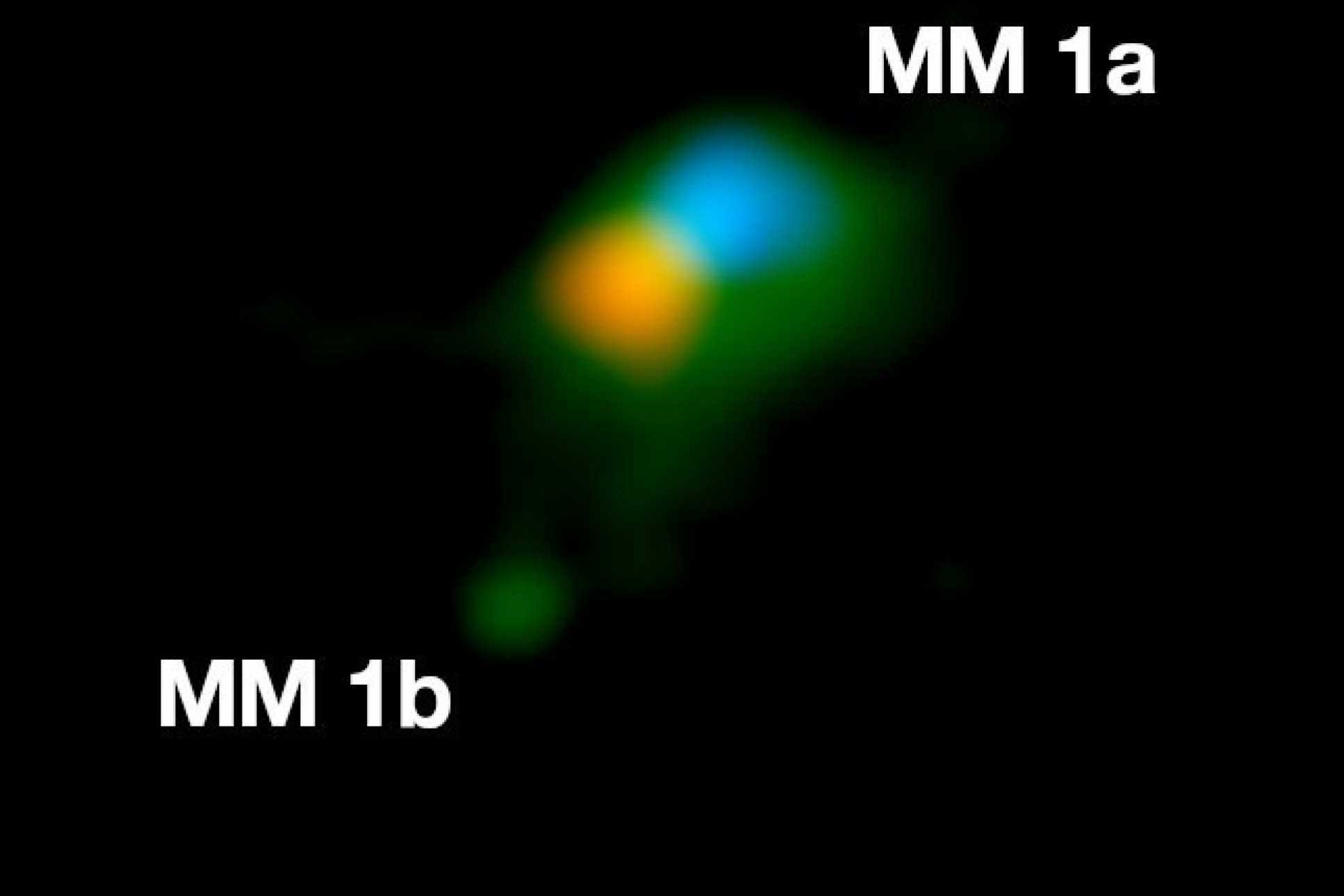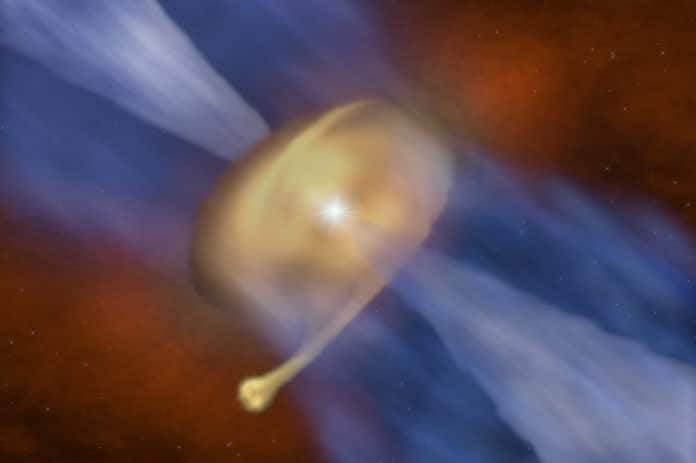Scientists recently made an unexpected discovery while observing the formation of a massive young star, called MM 1a. They found the formation of a small star from dust surrounding MM 1a, in a similar way to how planets are born.
Scientists named this small star as MM 1b as it is formed out of the gas and dust surrounding the larger MM 1a.
Stars form within large clouds of gas and dust in interstellar space. When these clouds collapse under gravity, they begin to rotate faster, forming a disc around them. It is in these discs that planets can form around low mass stars like our Sun.
This discovery was made by the scientists from University of Leeds and Imperial College London researcher using a unique new instrument situated high in the Chilean desert – the Atacama Large Millimetre/submillimetre Array (ALMA).

Co-author Dr. Thomas Haworth, from the Department of Physics at Imperial, helped predict what might be observed around MM 1a, and then to interpret what they actually found. He said: “It’s great when the new data surprise you, which was definitely the case here.
“Seeing the disc itself in so much detail is exciting, but detecting a second star-forming within the disc, perhaps in a similar way to how planets form, was a huge unexpected bonus. There is a lot of work ahead of us to fully understand the consequences of this new discovery.”
Lead author Dr. John Ilee, from the School of Physics and Astronomy at the University of Leeds, said: “In this case, the star and disc we have observed is so massive that, rather than witnessing a planet forming in the disc, we are seeing another star being born.”
Scientists measured the amount of radiation emitted by the dust and subtle shifts in the frequency of light emitted by the gas. Doing this, the specialists were able to ascertain the mass of MM 1a and MM 1b.
They found that MM 1a weighs 40 times the mass of our Sun. The smaller orbiting star MM 1b was calculated to weigh less than half the mass of our Sun.
Dr. Ilee said: “Many older massive stars are found with nearby companions. But these ‘binary’ stars are often very equal in mass, and so likely formed together as siblings. Finding a young binary system with a mass ratio of 80:1 is very unusual, and suggests an entirely different formation process for both objects.”
The team believes stars like MM 1b could form in the outer regions of cold, massive discs. These discs are unable to hold themselves up against the pull of their own gravity, collapsing into one or more fragments.
Dr Duncan Forgan, a co-author from the Centre for Exoplanet Science at the University of St Andrews, added: “I’ve spent most of my career simulating this process to form giant planets around stars like our Sun. To actually see it forming something as large as a star is really exciting.”
The researchers note that newly discovered young star MM 1b could also be surrounded by its own disc, which may have the potential to form planets of its own – but it will need to be quick.
Dr. Ilee added: “Stars as massive as MM 1a only live for around a million years before exploding as powerful supernovae, so while MM 1b may have the potential to form its own planetary system in the future, it won’t be around for long.”
This discovery is reported in the journal Astrophysical Journal Letters.
